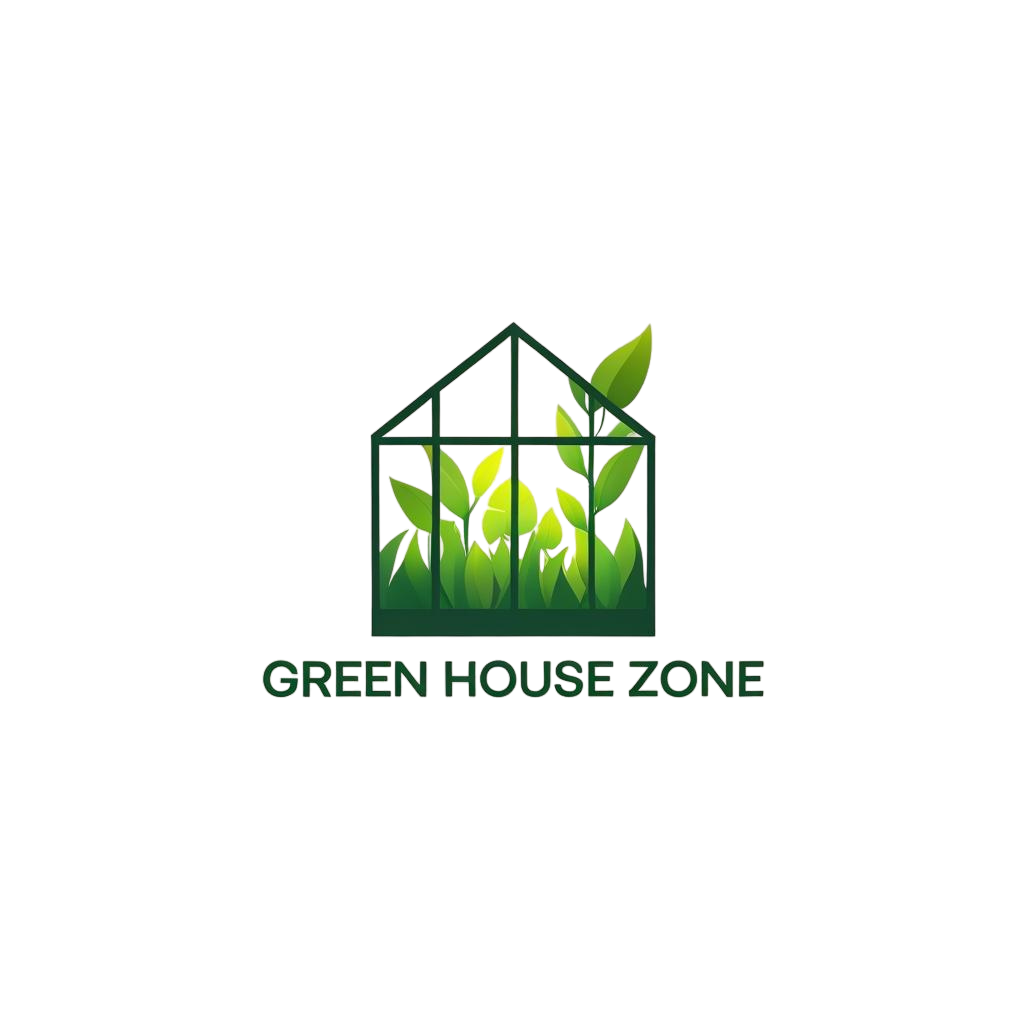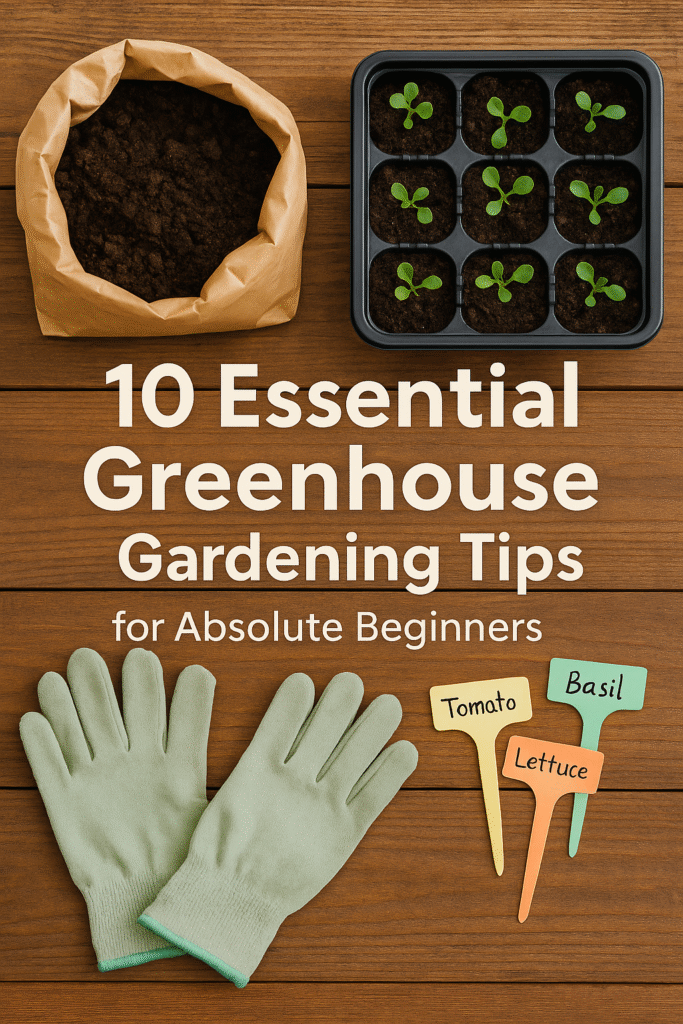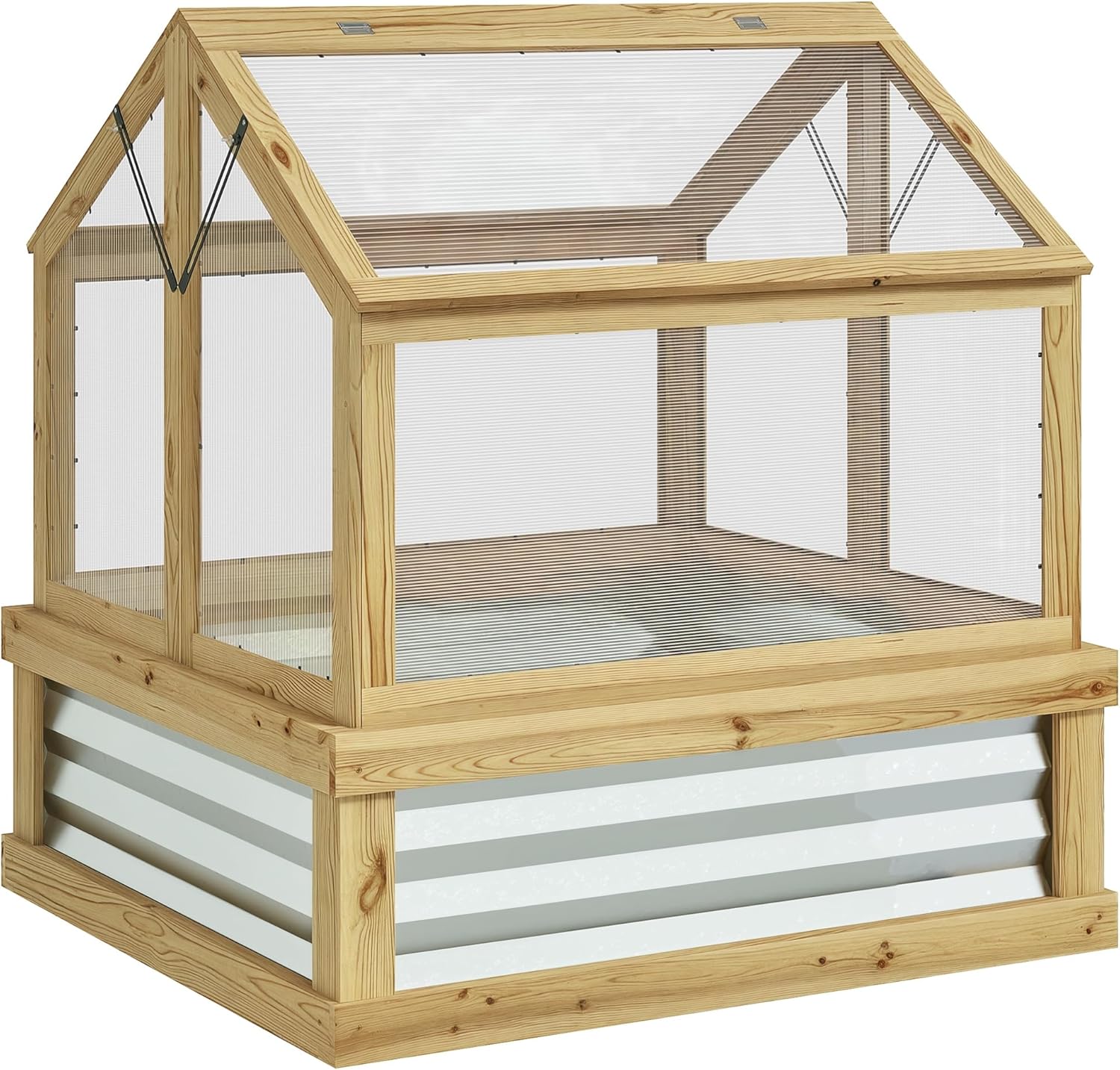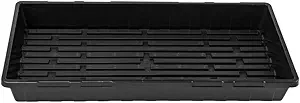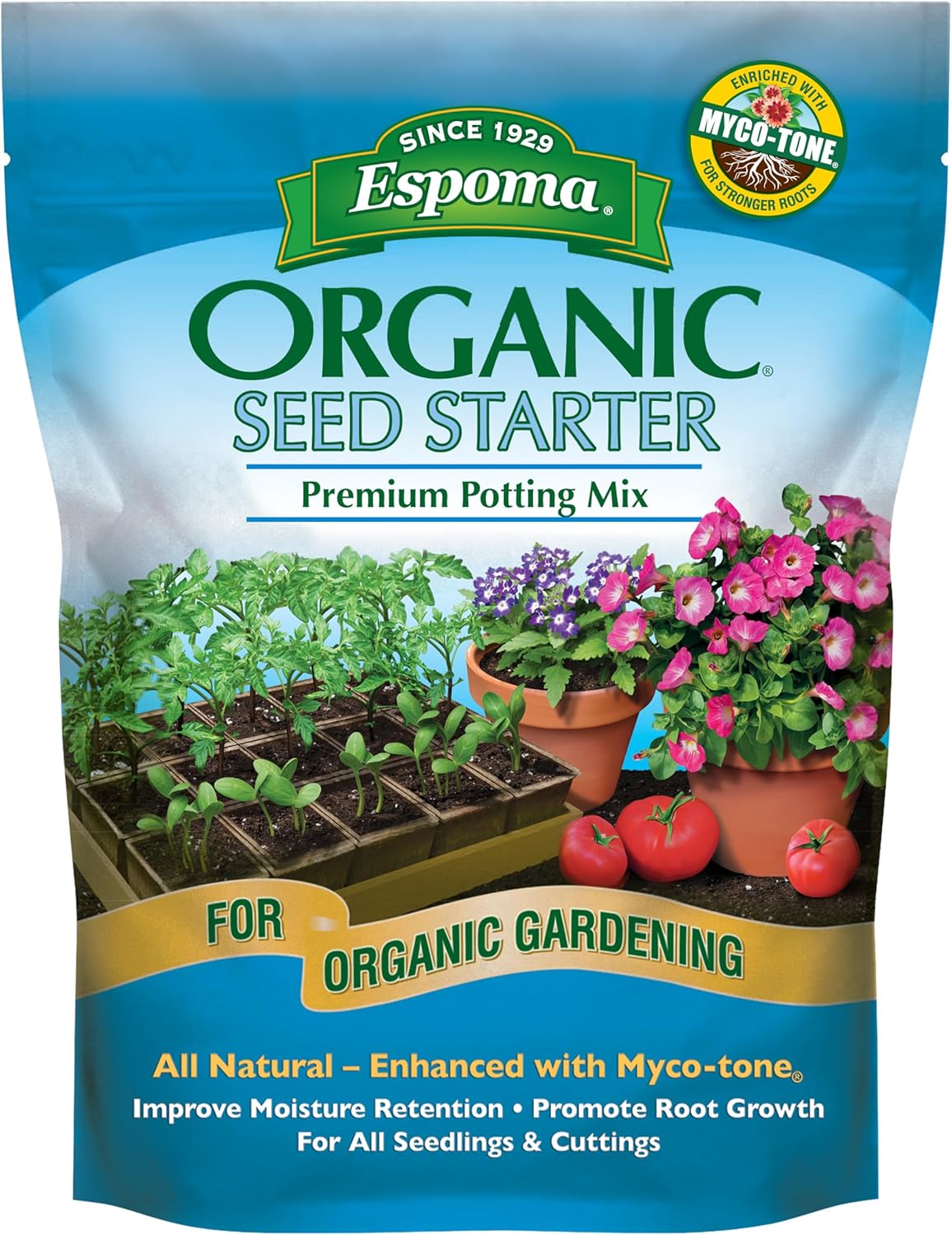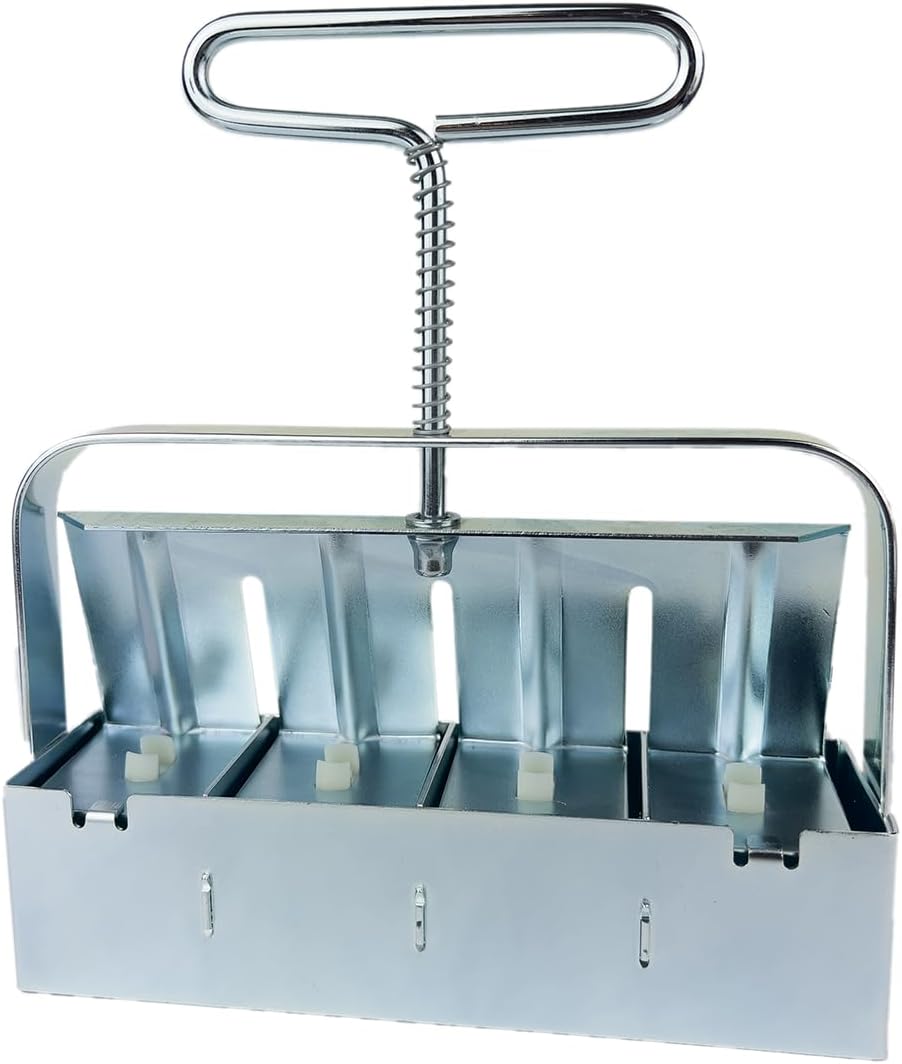10 Essential Greenhouse Gardening Tips for Absolute Beginners
So, you did it. You took the plunge and now you’re the proud owner of a new greenhouse. Congratulations! You’ve just unlocked a new level in your gardening journey. Standing inside, surrounded by the promise of year-round growth, is an incredibly exciting feeling. It’s quickly followed by a second feeling: “Okay… now what?”
Don’t worry, that’s a perfectly normal reaction. A greenhouse is its own little world with its own set of rules. Whether you’ve just assembled one of the year’s best portable greenhouses or finished a massive DIY project, this guide is your new best friend. We’re going to walk you through the ten most crucial tips every beginner needs to know to turn that empty space into a thriving, productive oasis.
Why You Can Trust This Guide
My journey into greenhouse gardening started just like yours: with a lot of excitement and even more questions. Over the past decade, I’ve managed everything from small hobby greenhouses to larger, semi-commercial structures. I’ve made the mistakes—scorched seedlings, battled mildew, and learned about ventilation the hard way—so you don’t have to. This guide isn’t theoretical; it’s a collection of practical, hard-won lessons from the field, vetted by horticultural experts to ensure you get the most accurate, trustworthy, and experience-based advice to start your greenhouse adventure on the right foot.
The 10 Golden Rules for Greenhouse Beginners
Think of these as your foundational principles. Master these, and you’ll be well on your way to becoming a greenhouse guru.
1Start with a Clean Slate
Before you bring a single plant or bag of soil into your new greenhouse, you must clean it. Even a brand-new structure can harbor dust or spores from the factory or shipping. A clean start is your best defense against future disease and pest problems. Mix a solution of one part household bleach to nine parts water, or use a horticultural disinfectant. Wipe down every surface: the glazing panels, the frame, any benches, and the floor. Let it air out completely before you begin.
2Master Your Microclimate
A greenhouse is not just a sunny room; it’s a “microclimate” that you control. Your most important job is to be a good manager of this climate. The two key variables are temperature and humidity. Invest in a simple digital thermometer/hygrometer so you always know your numbers. Most common plants thrive between 65-85°F (18-29°C) and 50-70% humidity. Your goal is to keep conditions within that sweet spot as much as possible.
Beginner’s Climate Control Toolkit

Govee Thermometer Hygrometer
An accurate digital thermometer/hygrometer is non-negotiable. This popular model can even send data to your phone, so you know the conditions inside your greenhouse from anywhere.
Check on Amazon
Univent Automatic Vent Opener
This is the best investment you can make for your greenhouse. It uses a wax cylinder to automatically open a roof vent when it gets hot and close it when it cools, no electricity needed. It’s a true game-changer.
Check on Amazon3Ventilation is Non-Negotiable
If you remember one tip from this guide, make it this one. Poor ventilation is the #1 killer of greenhouse dreams. A sealed greenhouse can skyrocket to over 120°F on a mild sunny day, cooking your plants in hours. Stagnant, humid air is also a breeding ground for fungal diseases like powdery mildew.
- On sunny days, open your doors and vents in the morning to create a cross-breeze.
- Use a circulating fan, even a small one, to keep the air moving constantly. This strengthens stems and prevents disease.
- An automatic roof vent opener is a lifesaver that manages temperature even when you’re not home.
4Watering Wisely
Watering inside a greenhouse is different. The increased heat means plants dry out faster, but the higher humidity means the soil surface can be deceiving. The golden rule is the “finger test.” Stick your index finger two inches into the soil. If it feels dry, it’s time to water. If it’s moist, wait. Always water the base of the plant in the morning, avoiding the leaves. This allows the foliage to dry before nightfall, further reducing disease risk.
5Choose the Right Plants (And Start Simple)
It’s tempting to try and grow everything at once, but this can lead to overwhelm. Start with plants that are known to thrive in a greenhouse environment and are relatively forgiving. This will build your confidence. Once you have a few successes, you can branch out. For a comprehensive list of great starting options, check out our guide on the best vegetables to grow in a greenhouse.
- Easy Starters: Bush beans, lettuces, spinach, radishes, basil, mint.
- Slightly More Challenging (but rewarding!): Tomatoes, peppers, cucumbers. (Choose varieties bred for greenhouse growing).
6Container Gardening is Your Friend
For beginners, growing in pots, grow bags, and containers is often easier than managing in-ground beds inside a greenhouse. It gives you complete control over the soil composition for each plant, prevents the spread of soil-borne diseases, and allows you to easily move plants around to find the perfect spot. Use a high-quality potting mix, not garden soil, as it’s formulated to provide the proper drainage and aeration needed for containers.
7Feed Your Plants Religiously
Plants in containers have a limited amount of nutrients available to them. Unlike in a garden where roots can spread out, a pot-bound plant relies entirely on you for its food. You will need to fertilize more often than you do outside. A balanced, water-soluble fertilizer (like a 10-10-10 or 20-20-20) applied every 2-3 weeks during the growing season is a great starting point.
8Practice Proactive Pest Control
The protected environment of a greenhouse is as inviting to pests as it is to plants. The key is to be proactive, not reactive. Get into the habit of inspecting your plants—especially the undersides of leaves—every few days. The best first line of defense is a pack of yellow sticky traps. They will catch flying pests like aphids, whiteflies, and fungus gnats, alerting you to a problem before it becomes an infestation. If you do find pests, start with the gentlest treatment, like a spray of insecticidal soap or neem oil.
Essential Beginner’s Supplies

Trapro Yellow Sticky Traps
These are your early warning system. Incredibly effective at trapping common greenhouse pests and letting you know what you’re dealing with. An absolute must-have.
Check on Amazon
Bonide Captain Jack’s Neem Oil
A 3-in-1 organic solution that works as an insecticide, fungicide, and miticide. It’s the go-to, plant-safe treatment for a wide range of common greenhouse problems.
Check on Amazon9Get Organized and Keep Notes
A successful greenhouse is an organized one. Label everything! You will not remember which tomato variety you planted where. Keep a simple journal or notebook. Record what you planted and when, when you fertilized, and any pest problems you encountered. This log will become your most valuable learning tool, helping you repeat your successes and avoid repeating your failures next season.
10Know Your Structure
Spend time getting to know the specifics of your greenhouse. Where are the hot spots? Which corner gets the most morning sun? Does the door seal properly? Regular maintenance is key, whether you have a kit or followed a guide on how to build a greenhouse at home. Routinely check that all nuts and bolts are tight, that the panels are secure, and that there are no tears in the cover. A well-maintained structure is a long-lasting and effective one.
Frequently Asked Beginner Questions
How do I keep my greenhouse from getting too hot in the summer?
Ventilation is your primary tool. Open doors and vents to create airflow. A circulating fan helps immensely. For very hot climates, you may need to install a shade cloth over the greenhouse during the peak summer months. This cloth can reduce the internal temperature by 10-15 degrees or more.
Do I need to heat my greenhouse in the winter?
It depends on your U.S. climate zone and what you want to grow. In zones 8 and above, an unheated greenhouse can protect plants from frost and allow for cool-season vegetable gardening all winter. In colder zones, you will need a heater to keep the temperature above freezing if you want to overwinter tender plants or grow anything other than the hardiest greens.
What’s the difference between garden soil and potting mix?
Never use soil from your garden in containers. It is too dense, compacts easily, drains poorly, and can contain weed seeds and diseases. Potting mix is a specially formulated, soil-less medium (usually made of peat moss, coir, perlite, and vermiculite) that is sterile, lightweight, and provides the perfect balance of moisture retention and drainage for containers.
Conclusion: Your Journey Begins Now
Your greenhouse is a journey, not a destination. There will be incredible successes and frustrating learning moments. Be patient with yourself, be observant of your plants, and don’t be afraid to experiment. By following these foundational tips, you’ve replaced the overwhelming “what now?” with a confident “let’s get growing.”
Welcome to the most rewarding club in the gardening world. Enjoy the process, and happy growing!
